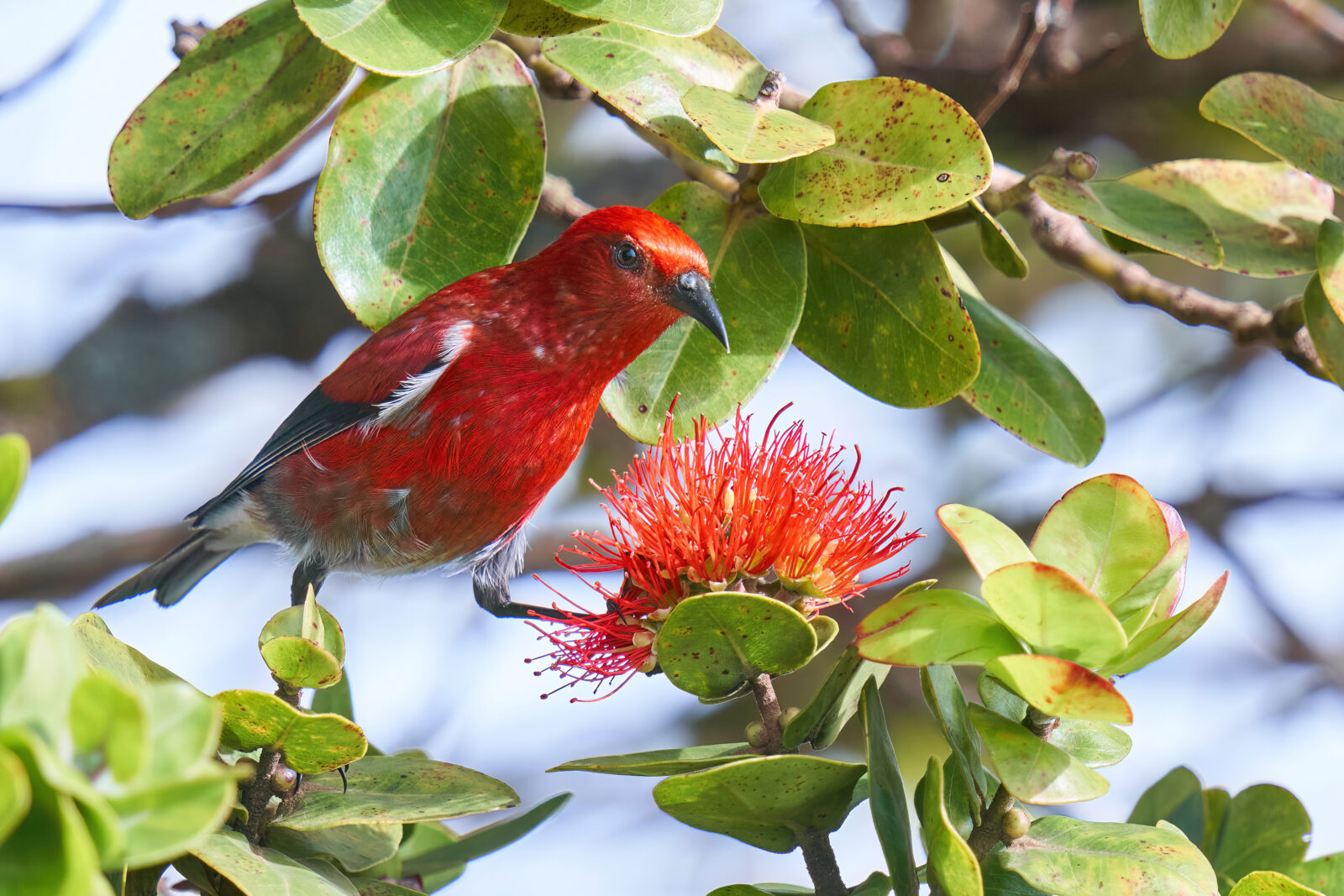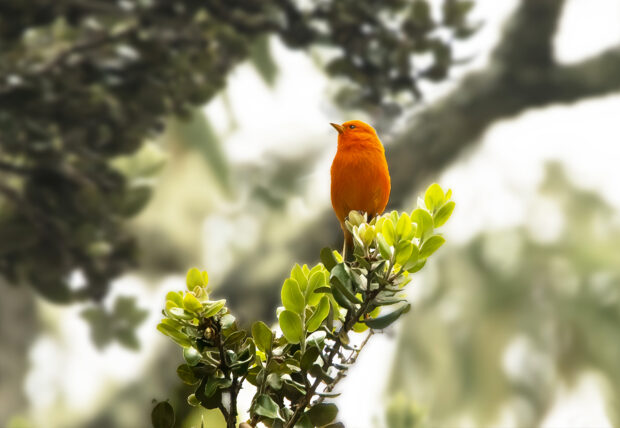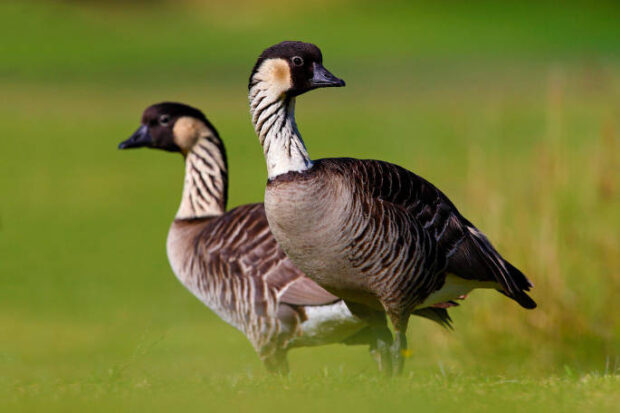We have much more to do and your continued support is needed now more than ever.
Birds Not Mosquitoes: A solution at the heart of Hawai’i’s extinction crisis
As Hawai’i’s native and endemic birds disappear, a bold solution lies within our grasp.

Going to Hawai’i to escape the winter back home? Whether you are an expert birder or just bird curious, or just open to exploring the birds of the islands, the most important item to pack is the Merlin birding app, from the Cornell Lab of Orinthology. Jonee Peters, a Native Hawaiian and the executive director of Conservation Council for Hawai’i, a Federation affiliate, explains how Hawai’i has become the home to 44% of the country’s endangered and threatened species. And she helps us to untangle the significance of a modified mosquito to save the last of Hawai’i’s native birds.
October was an especially painful moment for Hawai’i’s native bird populations. The U.S. Fish and Wildlife announced it was delisting 10 bird species from the endangered species list—because they had gone extinct. All but two were from Hawaii.
This puts Hawai’i at the center of the country’s extinction crisis. Hawai’i is the extinction capital of the world, and more specifically, the bird extinction capital of the world, according to experts.

Many of Hawai’i’s birds are endemic—meaning they’re found nowhere else on earth. These birds are native to our islands and once they’re gone, a bit of Hawaiian culture dies with them. Endemic birds were incorporated into everyday life. They are depicted in traditional Hawaiian oli, hula and mele (chants, dance and songs). We named our children after our favorite birds, and named special places where specific birds were known to frequent. Master craftspeople utilized the specific feathers from specific birds in making exquisite capes, helmets, royal standards, lei’s and in other decorative pieces. Once these birds are endangered or extinct, a whole culture involving them goes extinct as well.
These rare birds are disappearing before our eyes because of climate change, invasive species/predators, and loss of habitat. It is our kuleana (responsibility) to kōkua (help) our native birds and other native species that are on the brink of extinction by using every tool available to us to fight these threats.
Mosquitoes are the problem. And the solution?
One of those tools is the use of Incompatible Insect Technique (IIT) on mosquitos. Avian pox and malaria are decimating our native bird populations. Climate change and global warming allow the mosquitoes to inhabit higher elevations, squeezing out smaller areas for our native birds to escape. IIT would help combat deadly avian malaria by releasing male mosquitoes infected with the bacterium “Wolbachia,” which would suppress mosquito populations, thereby reducing the risk of transmission of vector-borne diseases. This method would be targeted for limited release on Kauai. Time to act is limited as our birds are going extinct now, yet the IIT process has been paused with court proceedings.
Our native honeycreepers are most at risk. We have five individuals of ‘akikiki left in the wild, and a few other birds like the ‘akeke’e, kiwikiu, and ‘akohekohe that are few in number. We are breeding a few in captivity, but we won’t be able to release them due to avian pox or avian malaria. If we don’t kōkua (help) now, we’ll lose more of our beloved species.

A mate’s last call
There are so many beautiful native bird calls in Hawai’i, but there is also a sad one. It was the call of the last Kauai O’o bird. He was calling for its mate, but it had perished. Males and females each have different calls and when they call together it’s like an orchestra of birdsong. But now, there isn’t a single O’o left on the face of this earth. This truly hits home as a Native Hawaiian, because this bird plays such a significant role in our heritage. The tradition was to pluck the bird’s yellow feathers then let the bird go. We only used the yellow feathers in making our traditional capes, helmets, royal standards, lei’s and other handiworks. Now what is left for the next generation? Our kids and grandkids can only see the O’o and the featherwork in the museum, and learn about them in books, song, chants, and hula.
There won’t be a bird that we can associate with in making these items or hearing them in songs. The whole tradition of bird catching, plucking feathers, crafting, and perpetuating that piece of Hawaiian culture died with that species. So this is what we must think of when we consider what’s at stake now. Are we willing to risk losing the few native species we have left?
Just as this bird needs its mate, we need our environment. In Ancient Hawai’i, just as my grandmother taught me, we associate everything in our environment, and this is ingrained in my being. Nothing is safe if our ecosystem isn’t safe.
Resources
- Hawai’i Wildlife Center
- Birdnote (listen to bird calls)
- Public News Service story





















